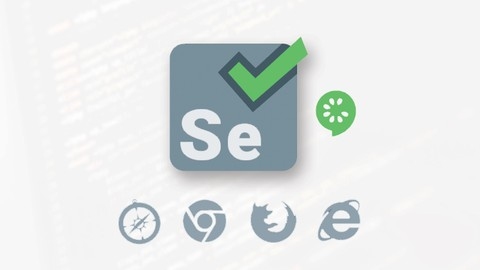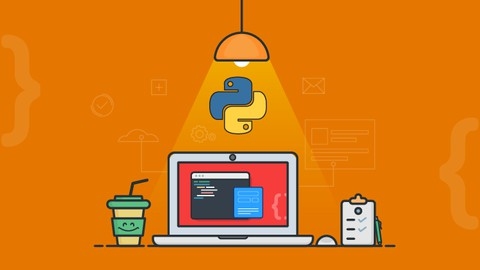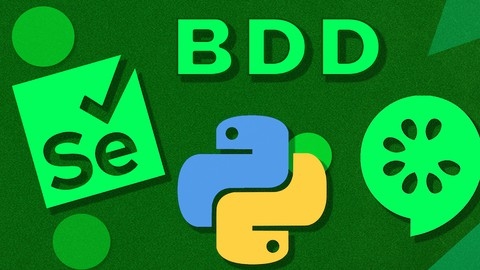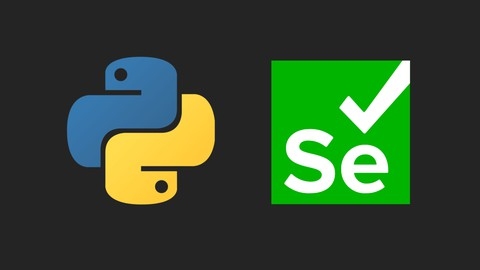Behavior-Driven Development (BDD) has revolutionized the way software development teams work.
By focusing on the desired behavior of a software system, BDD fosters collaboration between developers, testers, and stakeholders, ensuring that the final product meets everyone’s expectations.
Learning BDD is a valuable skill that can enhance your software development career, allowing you to write clear, concise, and maintainable tests.
Finding a good BDD course on Udemy can be a challenge with so many options available.
You want a course that is comprehensive, engaging, and taught by experts, but also fits your learning style and goals.
For the best BDD course overall on Udemy, we recommend Learn Cucumber BDD with Java -MasterClass Selenium Framework.
This comprehensive course provides a deep dive into Cucumber BDD using Java, covering everything from the basics of Cucumber to building a robust Selenium Cucumber framework.
It’s an ideal choice for both software testers and developers who want to master the art of BDD with practical applications.
While this course is our top pick, there are many other great BDD courses on Udemy.
Continue reading to explore our full list of recommendations and find the perfect BDD course for your learning journey.
Learn Cucumber BDD with Java -MasterClass Selenium Framework
The course covers everything you need to know, from the basics of Cucumber to building a robust Selenium Cucumber framework.
You’ll start by learning the fundamentals, including the Gherkin syntax and how to understand and write Cucumber scenarios.
The course then takes you through setting up your Java environment and configuring a Cucumber project, ensuring you have a solid foundation to build upon.
One of the key strengths of this course is its focus on code reusability and best practices.
You’ll learn how to achieve code reusability in Cucumber steps, use Regex patterns for parameterization, and design data-driven tests with Cucumber’s Background keyword.
The course also covers important design patterns, such as the Page Object pattern and Factory pattern, to help you create maintainable and scalable test suites.
As you progress, you’ll dive into more advanced topics, including Cucumber hooks for setup and teardown, reporting techniques, and addressing common framework problems.
The course also provides a sample Selenium Cucumber project and an Appium Cucumber project, allowing you to apply your knowledge in a practical context.
If you’re interested in test automation, the course dedicates a significant portion to integrating Selenium with Cucumber.
You’ll learn how to create a Maven project with Selenium and Cucumber dependencies, inject Selenium tests into Cucumber, and implement various design patterns to structure your code effectively.
To ensure your tests are robust and efficient, you’ll explore test utilities, tags, and parallel test execution using TestNG.
The course also covers generating Extent Reports and failure screenshots, as well as rerunning failed tests, which are crucial for effective test management.
Taking a step further, you’ll learn about command-line options for running Cucumber tests and integrating your Cucumber Selenium framework with Jenkins for CI/CD scheduling.
The course also includes a comparison of parallel test execution using JUnit vs. TestNG, giving you a well-rounded understanding of test execution options.
Finally, the course provides a brush-up on core Java basics, ensuring you have a solid foundation in programming concepts.
This includes a review of Java principles, classes, objects, strings, interfaces, inheritance, arrays, and more.
Selenium WebDriver with Java & Cucumber BDD
The course starts by introducing you to testing and Selenium automation, giving you a demo of WebDriver in action.
You’ll learn how to install and use the Selenium IDE to record and run tests, modify test data, and export tests to Java code.
From there, you’ll dive into automating actions with Selenium WebDriver.
You’ll create a login test outline, open browsers with Selenium, understand HTML and the DOM, find elements using Chrome, simulate user actions, capture text and page titles, and more.
This hands-on section will teach you the core skills for web automation.
Next, you’ll learn different techniques for finding elements on a web page - by link text, name, ID, XPath, and CSS selector.
You’ll compare methods, learn their priority, interact with form elements, and complete a new account application as practice.
The course then enhances your test scripts with Java programming concepts like variables for parameterizing data and cross-browser testing using a DriverFactory class.
You’ll also learn algorithms for handling radio buttons and checkboxes, and how to generate conditional test results.
To take your skills further, you’ll explore testing frameworks like JUnit and TestNG.
You’ll write assertions to generate test results, use annotations to guide the test flow, set up test suites, and more.
This section will teach you industry best practices.
A key part of the course focuses on building a complete data-driven testing framework.
You’ll learn to read test data from CSV and Excel files, use JUnit @Parameters and TestNG @DataProviders to feed that data into your tests for robust, scalable automation.
There’s a full case study on testing a booking and reservation application, covering search pages, implicit waits, advanced XPath, switching windows, handling popups, and completing bookings.
The course also covers the Page Object Model design pattern for more maintainable tests, setting up page classes, using the PageFactory, and writing tests with page objects.
Finally, you’ll learn behavior-driven development (BDD) with the popular Cucumber framework.
You’ll write feature files in Gherkin, implement step definitions with Selenium, enhance features with data tables, parameterize data into steps, and execute BDD-style tests.
Learn Cucumber BDD From Scratch+ Automation Framework Design
You will be taken on a journey from the basics of Cucumber and Behavior-Driven Development (BDD) to creating powerful automation frameworks.
The course starts with the fundamentals, introducing you to Cucumber and BDD.
You’ll learn how to create a Cucumber Maven project and use the Eclipse plugin to get your environment set up.
This lays the foundation for the rest of the course.
Next, you’ll dive into creating feature files and writing Gherkin scenarios.
This is where you’ll start to see the power of Cucumber in action, as you describe the behavior of your system in a simple and readable format.
You’ll then create step definitions, connecting your scenarios to the actual code implementation.
The course also covers important topics like the JUnit Test Runner, Cucumber options, and integrating Cucumber with Selenium WebDriver.
You’ll learn how to use parameters and data tables to create reusable and data-driven tests.
If you want to practice your skills, there are plenty of exercises, like practicing Gherkins and step definitions.
As you progress, you’ll be introduced to more advanced concepts like global hooks, tags, and the Page Object Model.
These features allow you to create more robust and maintainable frameworks.
You’ll also learn how to implement reporting plugins, such as the Masterthought Reporting Plugin, to generate detailed reports and capture screenshots for failed steps.
So, if you’re interested in mastering Cucumber BDD and automation framework design, this course provides a clear path to help you achieve your goals.
Learn API Automation Testing with Python & BDD Framework
You’ll start by installing the necessary tools, like the Pip Client and Pycharm Editor, and learning Python programming fundamentals.
This includes data types, loops, functions, and object-oriented programming concepts.
Then, you’ll move on to reading and writing JSON and CSV files, which are essential for handling data in automated testing.
The course then shifts to API automation testing with the Python Requests Library.
You’ll learn how to make GET and POST requests, validate responses, and handle authentication.
You’ll also cover session management, cookies, and sending attachments.
To work with database tables, you’ll build an SQL utility to interact with data using Python code and set up a MYSQL instance.
One of the key features of the course is the development of a BDD framework for API automation from scratch.
You’ll use Behave, a popular BDD tool, and Python Professional edition to create step definitions, implement hooks, and parameterize test scenarios.
You’ll also learn best practices for writing reusable code and generating Allure reports.
If you’re interested in cloud computing, there’s a section on using Python to communicate with AWS Linux servers.
You’ll set up an EC2 instance and use the Paramiko utility to execute commands and transfer files securely.
The course also includes a module on web scraping with Python and the Beautiful Soap package.
You’ll learn how to extract data from web pages and navigate through sub-URLs.
Throughout the course, you’ll have the opportunity to test your knowledge with quizzes and download code files to practice and reinforce what you’ve learned.
BDD with Selenium Webdriver and Specflow using C#
Starting with the basics, the course covers C# programming, including data types, control statements, and creating console applications.
You’ll learn about class objects, methods, and even touch on more advanced topics like inheritance and interfaces.
This foundation will help you understand the subsequent sections that focus on BDD and Selenium.
The course then transitions into teaching you about web component locators and introduces you to FireBug and Firepath for inspecting web elements.
You’ll master the art of crafting Xpaths to locate and interact with web elements, which is crucial for test automation.
This includes handling various web elements, such as links, buttons, input boxes, and dropdown lists.
As you progress, you’ll be introduced to Selenium Webdriver and Specflow.
You’ll set up your BDD framework, learn about page object models, and understand the concept of step definitions.
The course also covers data-driven testing, where you’ll use CSV, XML, and Excel files to drive test data.
Keyword-driven testing is also explored, offering a more abstract approach to test automation.
One of the highlights of the course is its attention to detail in handling various scenarios you may encounter.
You’ll learn about taking screenshots, handling JavaScript alerts and pop-ups, and even working with auto-suggest lists and keyboard actions.
The course also covers parallel execution, enabling you to run tests across multiple browsers simultaneously.
With the inclusion of Specflow, you’ll be able to practice BDD by writing human-readable feature files using Gherkin language.
This allows for better collaboration between stakeholders and the development team.
The course also covers Specflow’s step definitions, assertions, and scenario outlines, providing a clear understanding of how to implement BDD effectively.
Selenium WebDriver 4, Cucumber BDD, Java & More!
You’ll begin with the basics, setting up your environment and learning about Java JDK, Apache Maven, and IntelliJ with the Cucumber Addon.
The course then delves into the world of Cucumber, teaching you how to create feature files and map step definitions, which are essential for translating business requirements into test cases.
As you progress, you’ll encounter more advanced topics, such as implementing step definitions, using Cucumber expressions, and creating runner classes.
These features ensure that your tests are organized and can be executed efficiently.
The course also covers important concepts like hooks, tags, and browser driver setup, giving you the tools to handle more complex scenarios.
To challenge your understanding, there’s a real-world challenge section where you’ll apply your knowledge to create feature files, map and implement step definitions, and utilize hooks, tags, and driver setup to solve practical problems.
The course also explores advanced concepts, including advanced hooks, driver factories, properties files, and parallel test execution, taking your skills to the next level.
Additionally, you’ll learn about base pages, custom commands, and page object modeling, which are crucial for creating reusable and maintainable test scripts.
The course also covers constant variables, Jenkins setup, and job creation for continuous integration, ensuring your tests are automated and can be run regularly.
With sections dedicated to advanced reporting, attaching exception images to reports, and targeting and triggering individual test suites, you’ll gain a deep understanding of how to analyze and present test results effectively.
Cucumber BDD with Python Behave and Selenium WebDriver 2024
You’ll start with the fundamentals, understanding what BDD is and why it’s essential.
You’ll be introduced to Gherkin, a business-readable, domain-specific language that will help you write clear and concise test steps.
The course will guide you through setting up your development environment, including installing Python on Mac and Windows, creating a virtual environment, and choosing an IDE (Integrated Development Environment) like PyCharm.
Once you have the basics covered, you’ll dive into BDD components and see how to structure your BDD projects.
You’ll learn about feature files, step definition files, and how to run your tests.
The course will show you how to pass parameters to steps and share data between them, making your tests more dynamic and reusable.
To make the learning process practical, you’ll work on a project that involves testing an e-commerce website.
You’ll set up your test framework, create test cases, and use custom configuration files.
You’ll also explore essential concepts like setup and teardown, scenario outlines, and tags, which will help you organize and maintain your tests efficiently.
One of the highlights of the course is the section on report generation.
You’ll learn how to generate Behave reports in various formats, including JUnit-compatible XML, JSON, and Allure reports.
This will enable you to present your test results effectively to stakeholders and collaborate better with your team.
As you progress, you’ll uncover more advanced features of Behave, such as calling steps in other step definitions and passing data from the command line.
You’ll also learn how to use the “–exclude” option to run specific tests, retry failed tests, and control the execution flow with options like “–stop” and “–dry-run”.
The course also includes a special section on SQL (MySQL), where you’ll learn the basics of working with databases.
You’ll set up your database, write SQL queries to manipulate data, and understand how to connect your tests to a database.
Additionally, you’ll have the opportunity to create your own e-commerce site locally using WordPress and WooCommerce to practice your testing skills in a real-world scenario.
The Expert’s Guide of Selenium with Python | BDD Framework
You’ll start with the fundamentals, learning about Selenium and its advantages and disadvantages, as well as setting up your environment with Python, Pycharm, and the necessary libraries.
The course then dives into Python programming, teaching you the basics and why it’s important for testers to understand.
You’ll learn about variables, user input, datatypes, and control flow using condition handling.
Transitioning smoothly, the course covers loops and practical programming exercises to reinforce your understanding.
You’ll also explore string handling, complex data types like lists, tuples, and dictionaries, and how to work with modules and files.
Exception handling, object-oriented programming, and working with Excel files are also covered in detail.
The course then shifts focus to web scraping and data handling.
You’ll learn how to navigate and extract data from web pages, work with CSV and JSON files, and validate JSON responses.
This leads into the core topic of element locators, teaching you how to uniquely identify elements on a web page using ID, name, link text, class name, and XPath.
With this foundation, you’ll be ready to write your first test case in Selenium WebDriver.
You’ll learn how to set up the Selenium library, interact with web elements like text boxes, radio buttons, and dropdowns, and perform keyboard and mouse operations.
The course also covers PyTest, a unit testing framework, and teaches you how to write and execute test cases, handle conditional execution, and generate reports.
Taking it a step further, you’ll explore advanced Selenium concepts, including taking screenshots, executing JavaScript, and handling multiple windows, popups, and tabs.
You’ll also generate documentation and logs, and use Allure for advanced-level reporting.
The course culminates in the design of BDD frameworks, teaching you the difference between TDD and BDD, and how to create common files, feature files, and step definitions.
You’ll also cover tags, environment files, and report generation in the BDD framework.
To ensure a well-rounded understanding, the course includes complimentary videos on API testing with Python, and concludes with a section on CI/CD implementation using Git and Jenkins for seamless integration and deployment.
Test Automation Framework [ Spring Boot + Selenium + BDD ]
This course takes you on a journey from the basics of developing a Microservice with Spring Boot to the advanced techniques of Behavior-Driven Development (BDD) using Cucumber.
You’ll start by learning the fundamentals of Spring Boot, including dependency injection, project setup, and bean scoping.
This lays the groundwork for understanding how to integrate Selenium with Spring Boot effectively.
The course then delves into practical examples of creating base classes, page objects, and test classes for web testing with Selenium.
You’ll also explore ways to manage WebDriver instances and run tests in different environments using Spring profiles.
As you progress, you’ll encounter challenges such as parallel testing issues and learn how to create custom scopes for WebDriver to overcome them.
The course also covers important aspects like resource handling, properties, and data-driven testing with Spring Data JPA.
This ensures that you can work with dynamic resources, localize your tests, and query data based on specific criteria.
One of the key highlights is the integration of Cucumber BDD with Spring Boot.
You’ll learn how to write feature files, define steps, and run Cucumber scenarios in parallel.
The course also addresses common issues, such as managing multiple step definitions and attaching screenshots for failed tests.
Additionally, the course covers various miscellaneous topics, including logging, aspect-oriented programming, Docker integration, and fixing issues with Extent Report.
Effective UI Test Automation With Serenity BDD And Selenium
You’ll be introduced to Serenity BDD, a powerful open-source library that simplifies test automation and reporting.
The course starts with setting up your environment, ensuring you have the right tools like Java, Git, and GitHub, and configuring popular IDEs such as IntelliJ and Eclipse.
Once your foundation is ready, you’ll dive into creating your first Serenity BDD project and writing test cases.
You’ll learn how to locate elements on a web page using different strategies, including CSS and XPath, which are essential for interacting with web elements.
One of the key strengths of Serenity BDD is its ability to organize test code effectively.
You’ll explore this by using action classes, which help structure your tests from the user’s perspective, and page objects, which abstract the user interface and simplify test maintenance.
You’ll also learn how to make your tests more flexible and reusable by using parameters and Serenity BDD configuration files.
Interacting with web elements is a crucial aspect of UI testing.
The course covers this in depth, teaching you how to work with input fields, checkboxes, radio buttons, and dropdown lists.
You’ll also learn about hover actions and configuring URLs.
Making assertions is a fundamental part of testing, and this course will show you how to do it effectively with AssertJ, a fluent assertion library.
You’ll also learn how to handle wait conditions, ensuring your tests are robust and reliable.
The course also covers data-driven testing, a technique that uses external data sources to drive test execution, and remote testing, which involves running tests on a remote server or cloud-based service.
You’ll learn how to configure different target environments and use popular remote testing services like Saucelabs and BrowserStack.
If you want to take your skills even further, the course includes a bonus section on JUnit 5, where you’ll learn the basics of this popular testing framework and how to use it effectively with Serenity BDD.









![Test Automation Framework [ Spring Boot + Selenium + BDD ]](/img/best-bdd-courses-udemy/3168808_TestAutomationFrameworkSpringBootSeleniumBDD.jpg)
